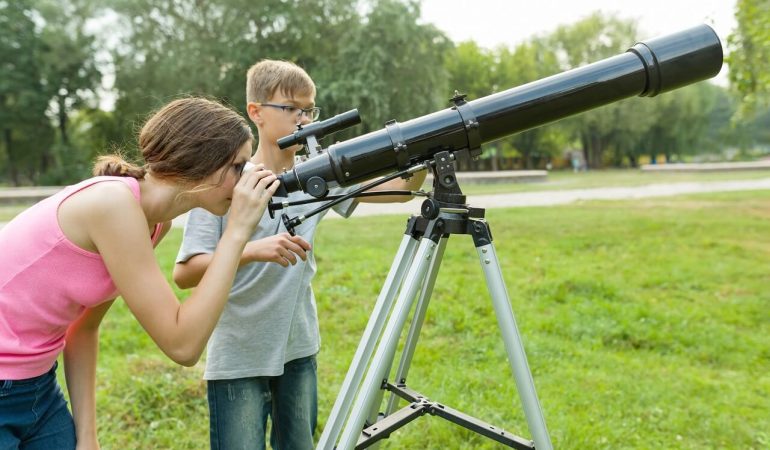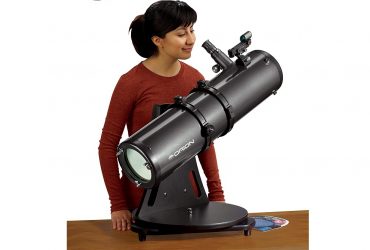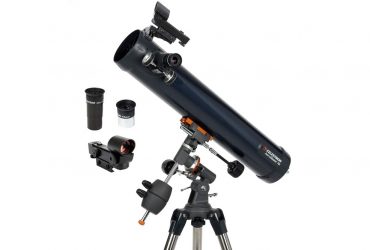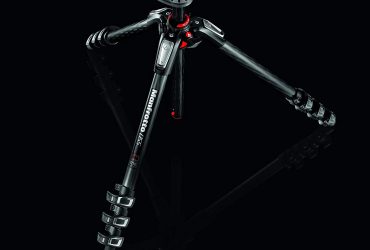How To Tell If Your Telescope Is Broken?
A funny thing about telescopes is that you can’t always tell when it’s broken. Is the blurry object you are looking at too far away or is it your telescope that’s making it fuzzy?
What about when you can’t see anything through your telescope? Did you set it up wrong or is it broken?
In this post, we explain how to tell if your telescope is broken and what to do about it.
How Fragile Are Telescopes?
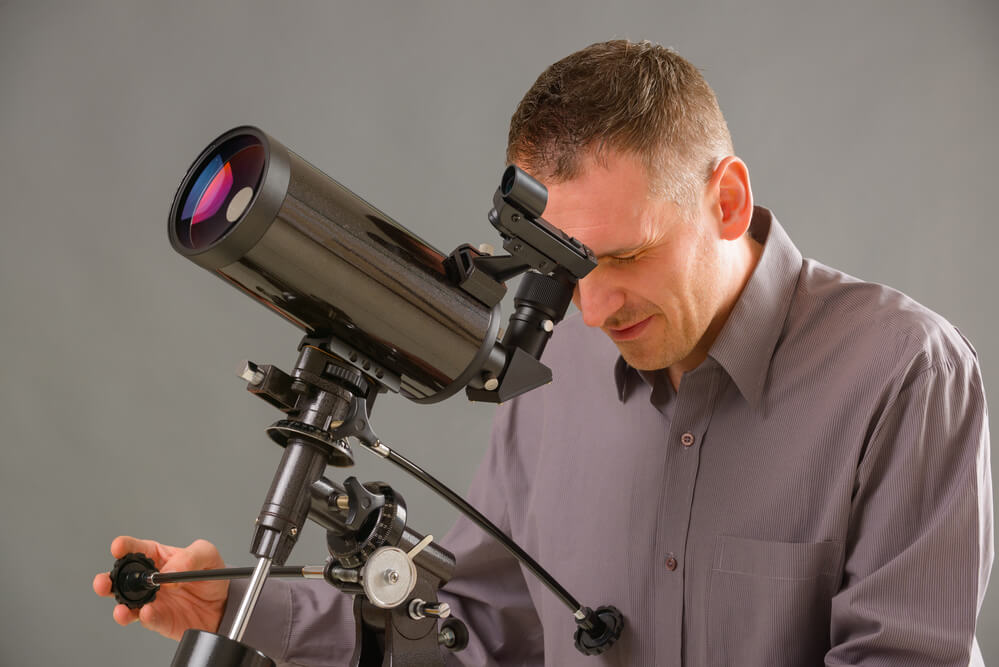
Telescopes are generally delicate instruments, but not so fragile that they break at the slightest knock or fall.
Even scratches on the lenses or mirrors, which is a big worry for many amateur astronomers, do not significantly affect the performance of a telescope. Only when numerous small scratches develop will you see a degradation in image quality.
Here’s an interesting story about a telescope that worked fine after sustaining seven bullet holes. Telescopes are more resilient than you think.
The biggest danger when handling a telescope is dropping it. If it falls from a significant height like the top of a table, the impact could shatter the mirror/lense or break one of the components in the telescope.
But in many cases, even a drop wont seriously damage a telescope. Usually, a collimation or alignment is enough to get it back to working perfectly.
So you don’t have to handle your telescope as if it is a Fabergé egg. As long as you are careful not to drop it from high, expose it to extreme heat or moisture, or expose the lenses to sharp objects, it will serve you for a long time.
Signs Your Telescope is Broken (Plus The Best Fixes)
Note that many of these signs are typically as a result of improper telescope setup. So don’t automatically assume that you have a busted telescope whenever you experience any of the signs.
Try setting up the telescope again and see if the problem goes away. Proper alignment/collimation is especially important. See further below for a quick guide on how to set up a telescope.
If you are sure you’ve set up the telescope properly and you still experience a problem, then it’s probably broken. Consult a telescope repair shop near you or consider replacing the telescope.
1. You Can’t See Anything Out of It
This is probably the worst case scenario for a telescope. Normally, even a damaged telescope will show some sort of image. But if you can’t see anything at all, that could indicate some serious damage.
It could also be just poor alignment or a part that’s out of place. Check the alignment first before you conclude the telescope is broken. Also check that you are using the right eyepiece.
For a telescope to not show anything (even after proper setup and alignment), one or more crucial components would have to be seriously damaged. Usually the damage is in the mirrors or lenses.
This usually happens if the telescope falls or something hits it hard. The impact can break the lens or knock one of the mirrors loose.
Possible fix: Check that all the mirrors and lenses are still there and unbroken. You may need to take the telescope apart. If the parts are missing or damaged, see if you can find replacements. In some telescopes, you cannot replace the optics and you have to buy a new telescope.
Also check the eyepiece for any signs of damage. Replace it if one of the lenses is missing or broken.
Tip: In addition to poor alignment, a foreign object like a leaf in the telescope can keep you from seeing anything. Check for that as well.
2. Everything Appears Blurry
A blurry image through a telescope is usually because you’ve not aligned it properly or you are using the wrong magnification eyepiece (usually using an eyepiece with too much power/magnification).
Other times, too much dust on the lenses or mirrors can also cause images to get fuzzy. Environmental factors (e.g. air pollution) can also result in blurriness.
If cleaning the lenses, aligning the telescope, getting the magnification right and changing locations doesn’t fix the blurriness then it’s possible the lenses or mirrors in the telescope are damaged.
They could have cracked or developed enough scratches to cause a fuzzy image.
Possible fix: There’s nothing much you can do about scratches or cracks on the telescope mirror or lens. Depending on your telescope, you can either replace the optics or buy a new telescope. If the cracks are on the eyepiece, those are cheaper to replace.
3. The Tube is Dented or Bent
Small dents on a telescope are usually not a big deal. As long as the optics are well collimated, a few minor dents will not affect the performance of the telescope.
But if the dent is deep or the tube is bent or warped, then that could affect the image quality. In some cases, you may not be able to see anything at all with the telescope.
Possible fix: The first thing to do is check if the dent has affected what you can see. Align and focus the telescope, then see what kind of image you get.
If you cannot see anything or part of the image is blocked, you’ll have to think about repairing or replacing the telescope.
4. Damaged Electronics
One of the reasons most telescopes are more resilient than we expect is that they don’t have any sensitive electronics in them. They can even get a bit wet without any damage.
But if you have a more advanced computerised telescope, also called a GoTo telescope, you have to be extra careful with it.
Weather, dust, extreme temperatures and moisture can damage the electronics in the telescope mount.
If you find your GoTo mount is not responding to inputs or it’s moving the telescope in an unusual way, there could be a problem with the electronics or the software.
Possible fix: It’s best to contact the manufacturer for advice as computerised telescopes can be tricky to work on.
How to Properly Set Up A Telescope
Most of the problems backyard astronomers experience in the telescopes are usually not because the telescope is broken but because it was set up the wrong way.
So before you get all worried over your telescope, make sure you’ve set it up right. Here is a brief guide on how to properly set up a telescope. If you experience problems with your telescope, try these steps to determine if it’s really broken.
- The first step is to select the right location. Ideally, you want a place away from light pollution, buildings and trees. It is also important to choose the right time when the sky is clear.
- While it is still daytime, align the finderscope or red dot finder using a distant object like the top of a building or an electric pole.
- Start setting up the telescope an hour before you are ready to start observing. This will give it time to acclimate to the ambient temperature, which helps prevent fuzzy and blurry images.
- Set up the tripod on level ground and adjust it to the most comfortable height. Attach the telescope plus other accessories including a diagonal and eyepiece. Start with a low magnification eyepiece to help you carry out a polar alignment.
- Once you’ve done polar alignment, you can start your observations. Use a low magnification eyepiece (like 20mm or 30mm) to observe distant objects like stars and galaxies and high magnification eyepieces (like 5mm or 10mm) to observe closer objects like the moon.
Can You Fix A Damaged Telescope?
It depends on the kind of damage you are dealing with as well as the telescope brand and model.
If a problem with the telescope is caused by dirt, poor alignment or a loose part, these are fairly easy to fix on your own. You can carefully clean the optics, perform collimation or tighten whatever’s loose.
For more serious issues like a dented tube or a shattered mirror, either contact the manufacturer for advice or look for a telescope repair service near you.
With some telescopes, you may be able to replace a damaged lens or mirror on your own. With others, it’s difficult to find exact replacements and you may have to buy a new telescope.
How To Take Care Of A Telescope
To reduce the risk of damage to your telescope, protect it from impact, whether it’s falling or being hit by other objects.
When using it, make sure the tripod is on a solid, level and stable surface. Be especially careful when setting up the tripod on a table or some other raised surface.
When you travel with the telescope, place it in a protective case.
At home, always store the telescope in a cool and dry place away from dust. A closed cabinet or cupboard is best. Make sure all dust caps are on and cover it with a sheet to keep out dust.
Try to clean the telescope as few times as possible. Cleaning the lenses can cause more damage than the dust you are trying to get rid off.
Only clean the telescope when you feel the dust build-up is affecting image quality. Here’s a helpful video on how to clean telescope optics without damaging them.
